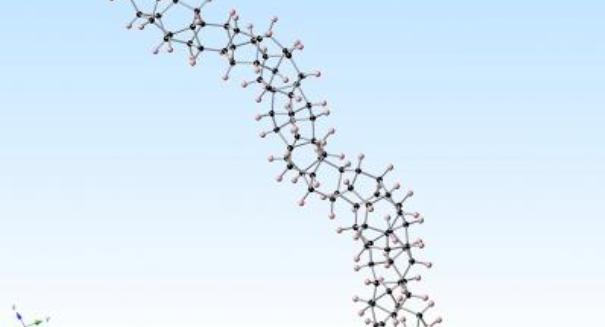
A new study reveals revolutionary process of producing diamond nanothreads, promising to be stronger and stiffer than any polymer or nanotube available today.
A study published Sunday in the journal Nature Materials uncovers a new method to produce ultra-thin diamond nanothreads with properties of extraordinary stiffness and strength greater than that of the strongest polymers and nanotubes available today.
Researchers of the study, led by John V. Badding of Penn State University, were able to compress separate carbon-containing molecules into an ordered, diamond-like nanomaterial, a process unsuccessfully attempted by other researchers for nearly a century.
“We discovered that slowly releasing the pressure after sufficient compression at normal room temperature gave the carbon atoms the time they needed to react with each other and to link up in a highly ordered chain of single-file carbon tetrahedrons, forming these diamond-core nanothreads,” said co-author Malcolm Guthrie of the Carnegie Institution for Science, in a recent statement.
According to the statement, the core of the nanothreads is a long strand of carbon atoms arranged in a similar fashion as a diamond structure: zig-zag cyclohexane rings of six carbon atoms bound together. “It is as if an incredible jeweler has strung together the smallest possible diamonds into a long miniature necklace,” said Badding. “Because this thread is diamond at heart, we expect that it will prove to be extraordinarily stiff, extraordinarily strong, and extraordinarily useful.”
“From a fundamental-science point of view, our discovery is intriguing because the threads we formed have a structure that has never been seen before.”
There are a variety of potential applications for the new study, but researchers primarily hope to improve the protection of the atmosphere (e.g. fuel-efficient and less-polluting vehicles). “One of our wildest dreams for the nanomaterials we are developing is that they could be used to make the super-strong, lightweight cables that would make possible the construction of a ‘space elevator,’ which so far has existed only as a science-fiction idea,” said Badding.
Leave a Reply